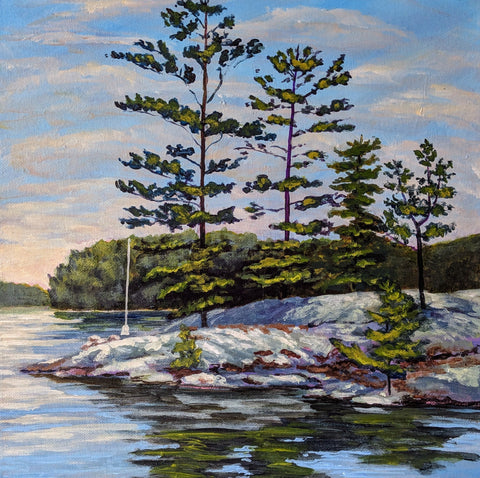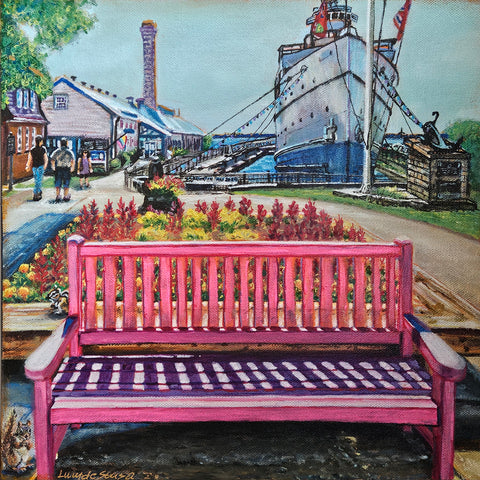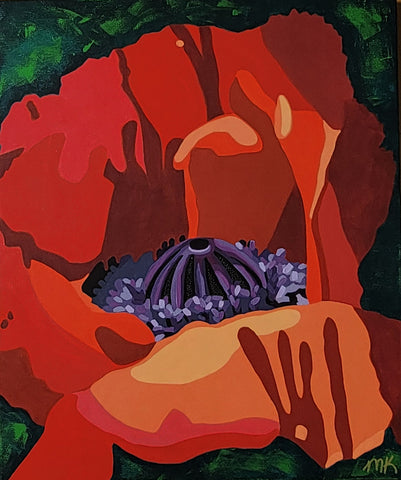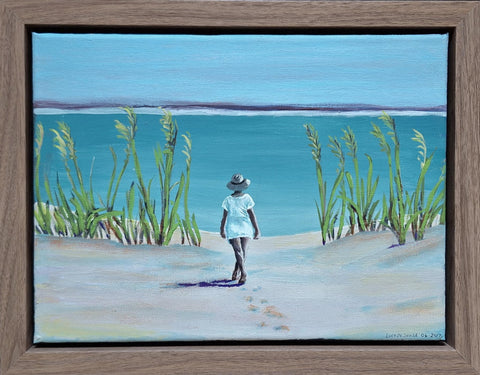Priceville
David Dossett
$218.00
is on back order
This painting, titled *Priceville*, is a 12” x 12” acrylic on canvas.
February is Black History Month, a time to reflect on both the triumphs and the injustices that have shaped our country. While I love Canada and believe it is the greatest nation in the world, it is important to acknowledge the darker chapters of our history—so we can learn from them and ensure they are not repeated.
Priceville, Ontario, was one of several communities where Black settlers, many of whom had fled slavery in the United States, built new lives in the 19th century. These settlers established farms, homes, and institutions, including the Summit Black Cemetery, where they laid their loved ones to rest. However, in an act of desecration, a local farmer later plowed over the cemetery and repurposed the headstones as foundation materials for his barn and house. Over time, most of the Black residents of Priceville moved away, their community fading into history. Yet, the injustice inflicted upon their ancestors lingers as a stark reminder of the racism they endured.
Though much of the physical evidence of their presence has been erased, their legacy—and the wrongs committed against them—must not be forgotten.
To learn more, watch Speakers for the Dead, a National Film Board of Canada documentary. From the NFB Website:
Speakers for the Dead
David Sutherland & Jennifer Holness
2000 | 49 min
This documentary reveals some of the hidden history of Blacks in Canada. In the 1930s in rural Ontario, a farmer buried the tombstones of a Black cemetery to make way for a potato patch. In the 1980s, descendants of the original settlers, Black and White, came together to restore the cemetery, but there were hidden truths no one wanted to discuss. Deep racial wounds were opened. Scenes of the cemetery excavation, interviews with residents and re-enactments—including one of a baseball game where a broken headstone is used for home plate—add to the film’s emotional intensity.
Photo credits: National Film Board of Canada
Music: www.epidemicsound.com





